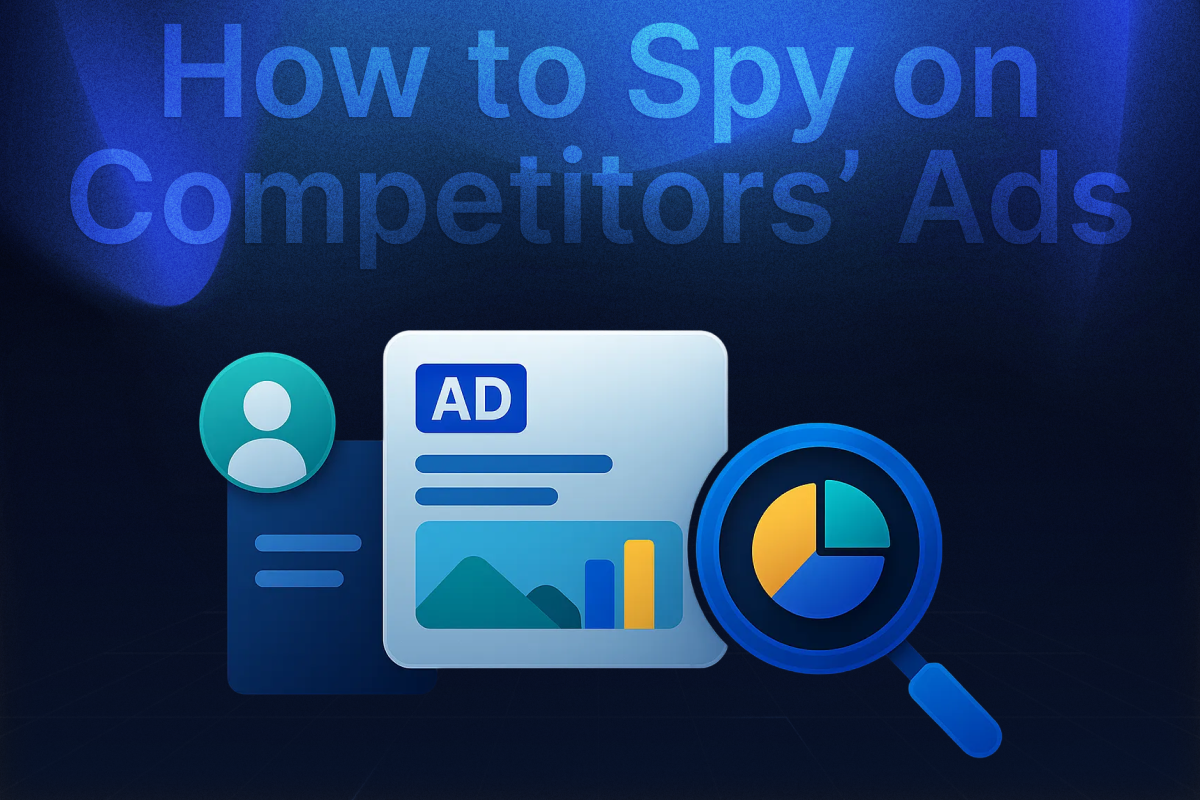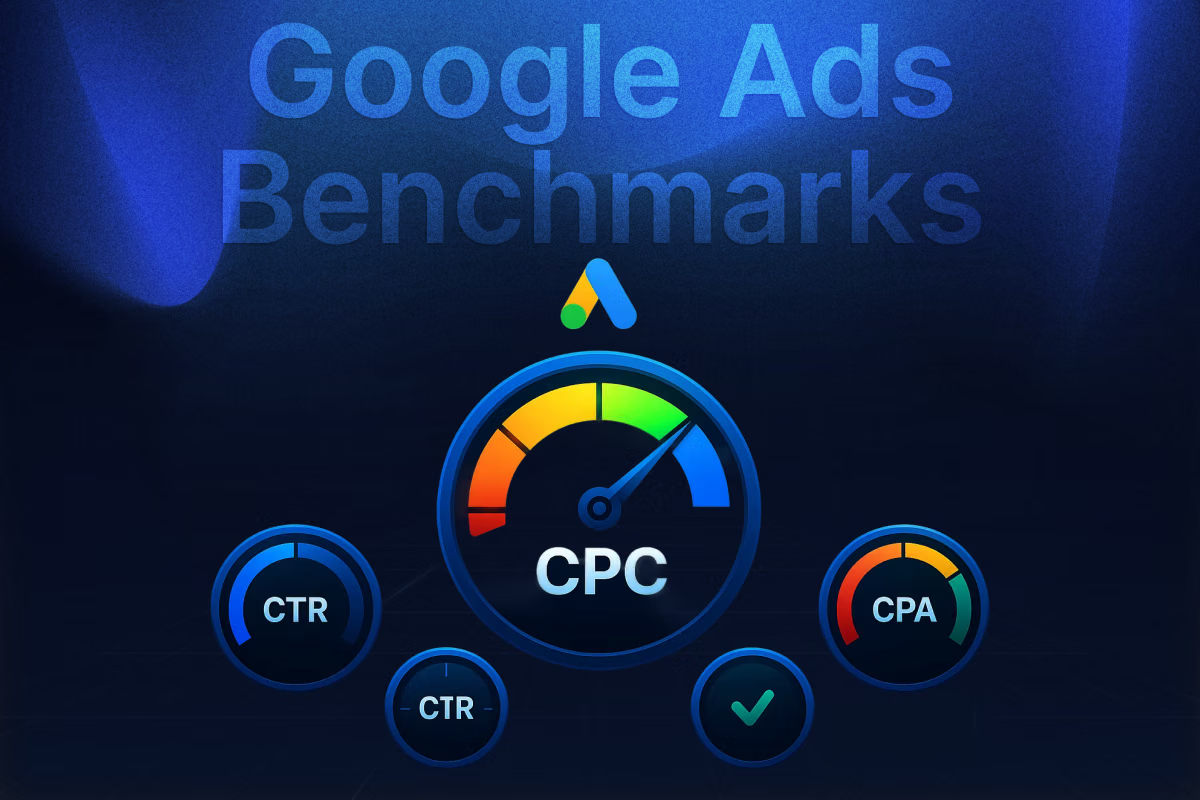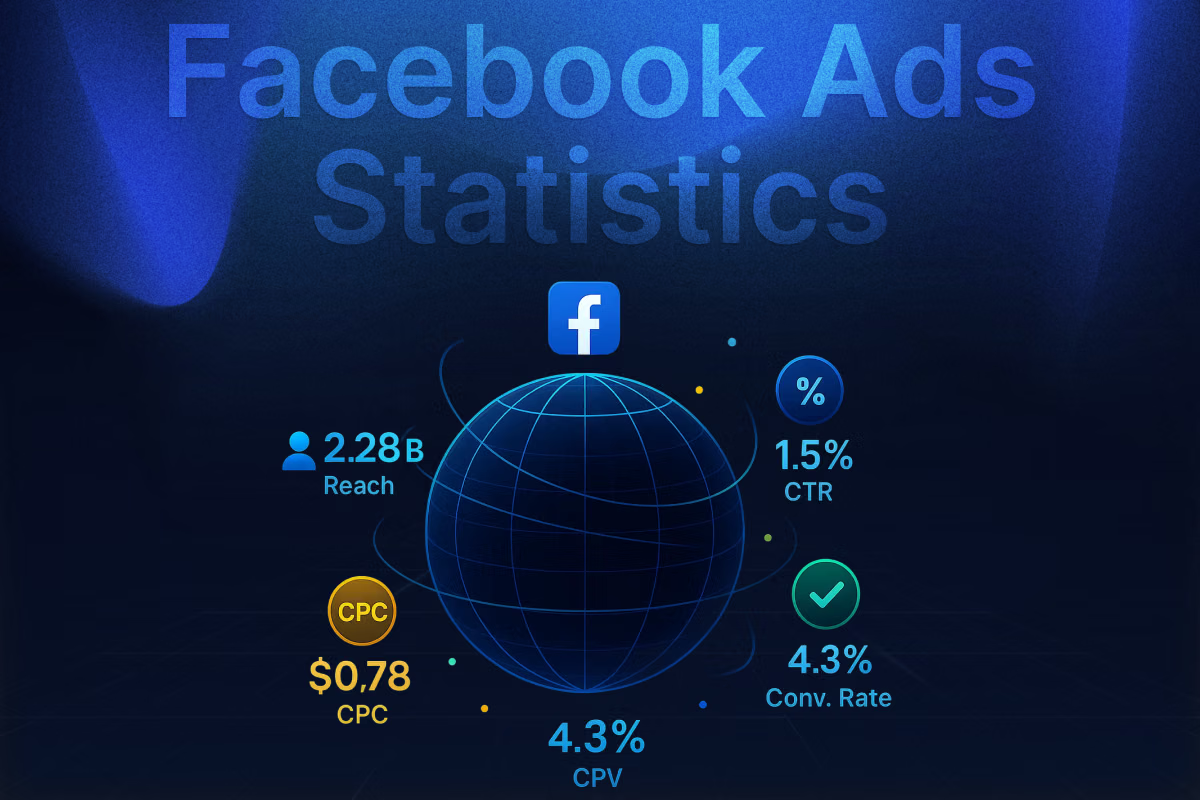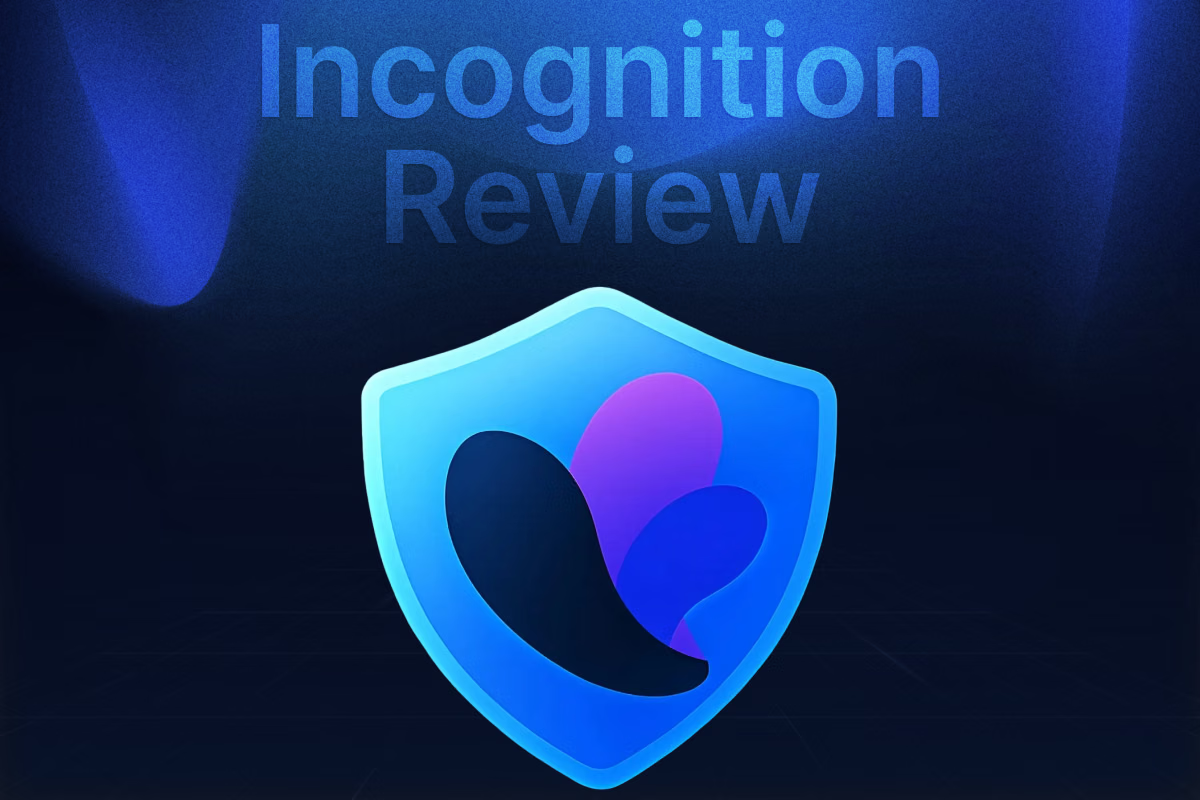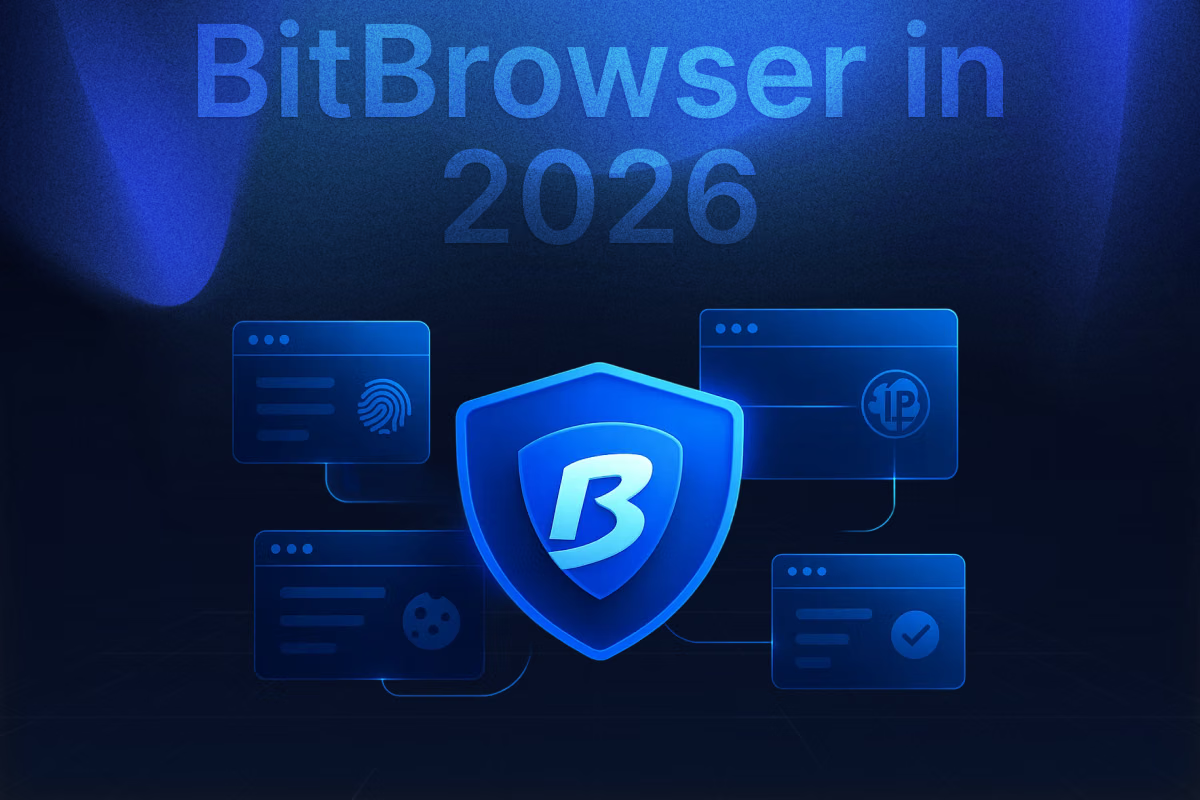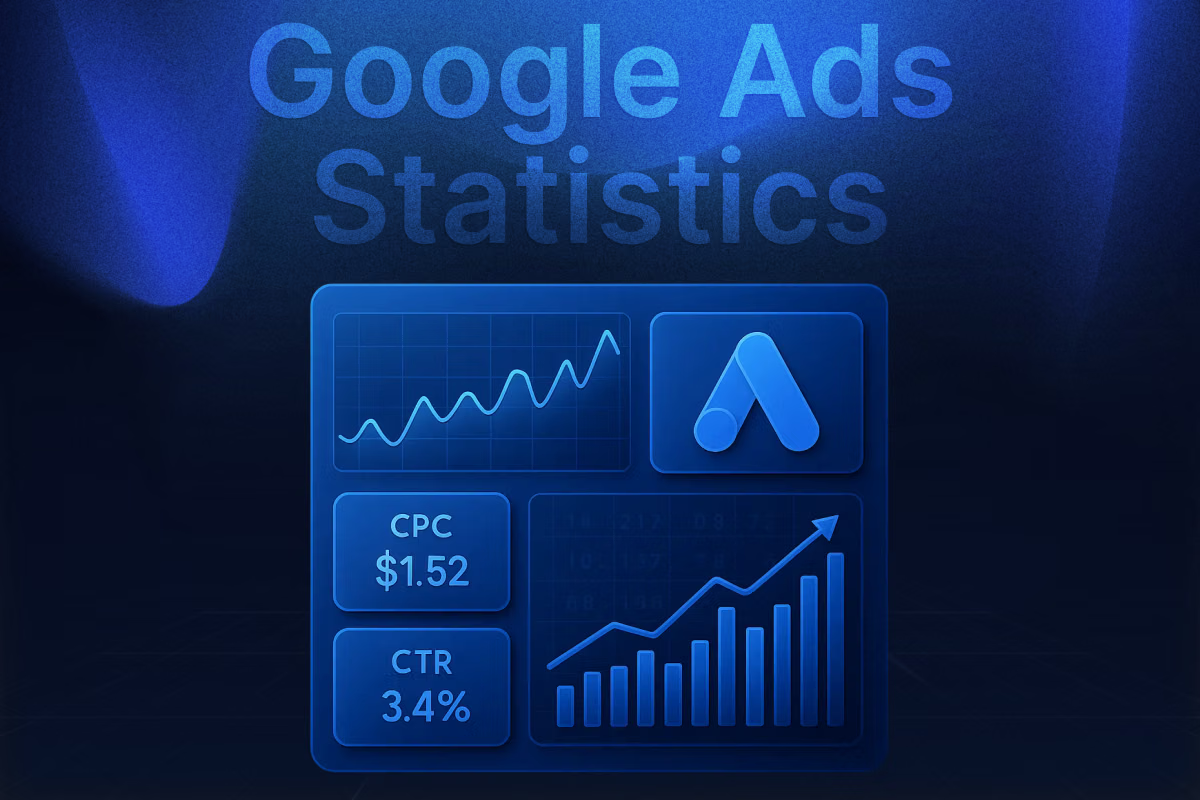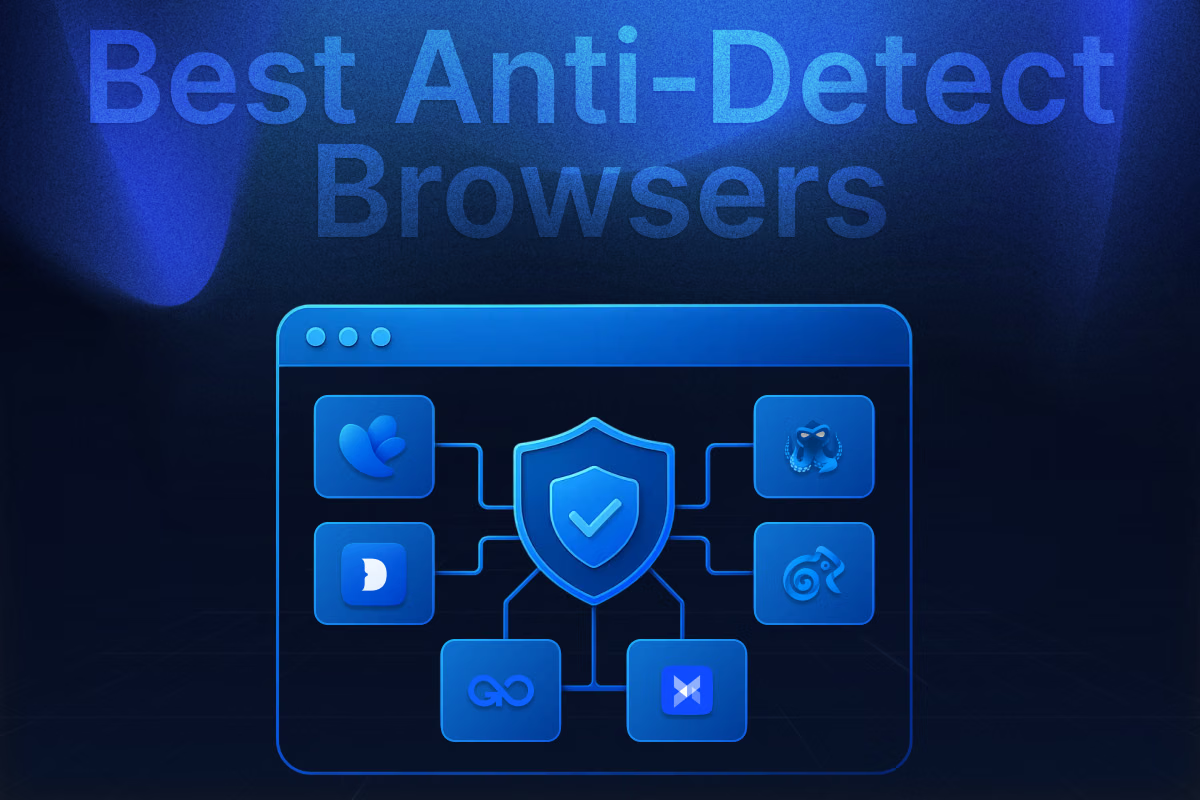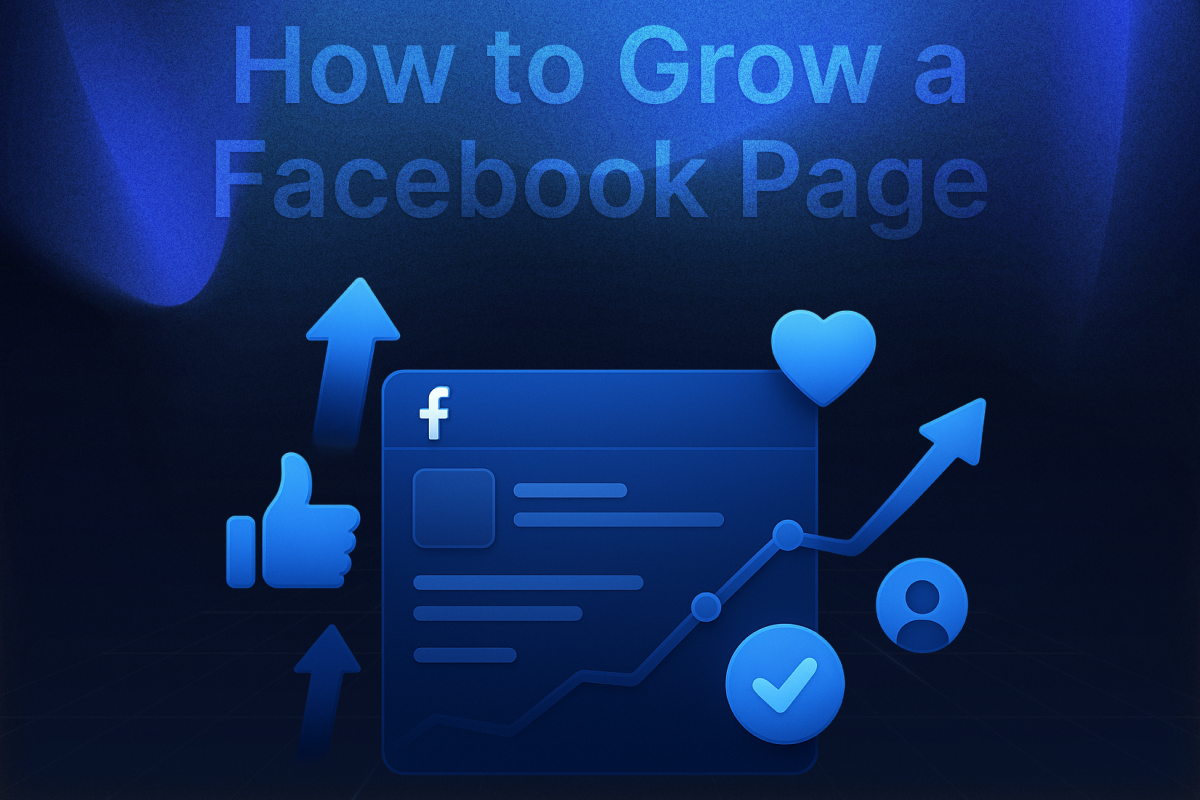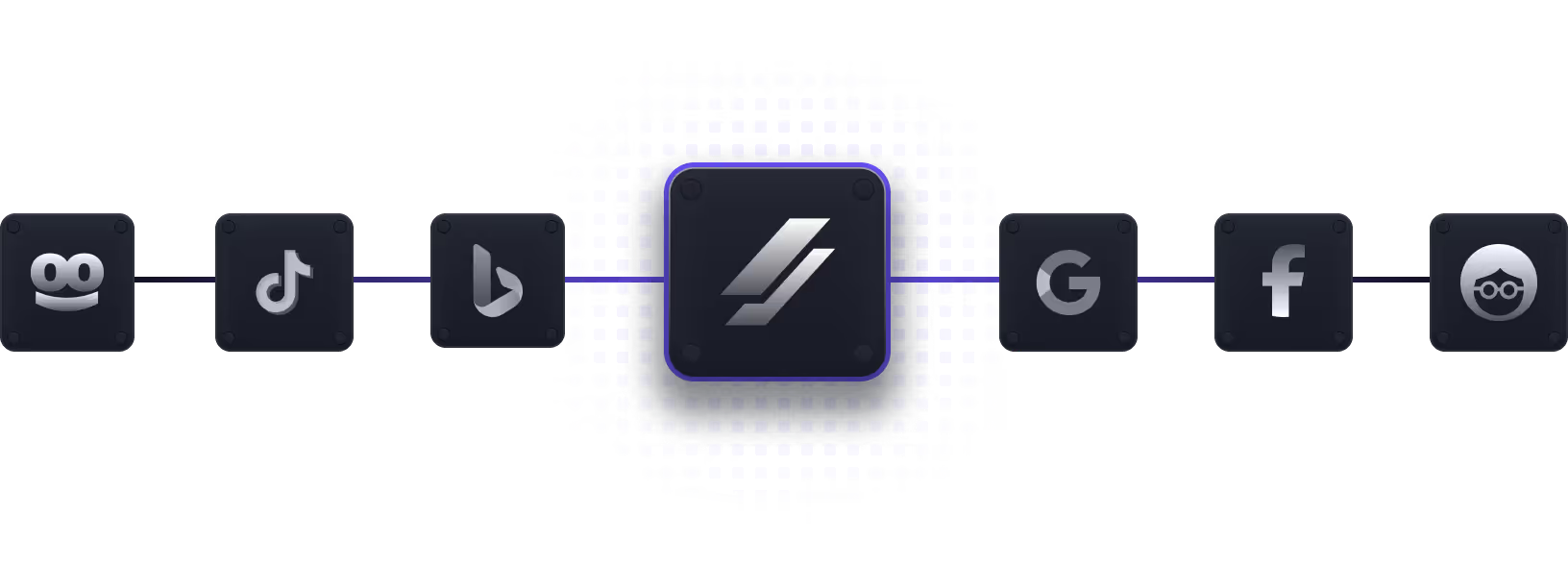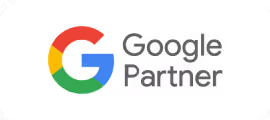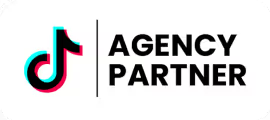Ever get the feeling that your Facebook advertising campaigns aren’t performing as well as they should be? Well, the only way to find out if that is the case is by observing your Facebook Ads metrics. Every ad on Meta generates a large amount of valuable data. But only by tracking the right metrics can businesses turn that data into real gains.
Monitoring key performance indicators helps you pinpoint winners, eliminate budget waste, and consistently optimize your Facebook advertising campaigns. In a nutshell, monitoring your Facebook ads metrics can save you money by investing in better-performing ads and ignoring ones that perform poorly. Without knowing the Facebook ad campaign metrics to measure, you risk flying blind and having ad campaigns that do not increase your product sales. This blog dives into the nitty gritty of Facebook ads metrics and how to use them.
Why Tracking Facebook Ad Metrics Matters

Before getting into the technicalities of ad metrics, it is important to know why you’re doing this. Monitoring campaign metrics can be a game-changer for your Facebook ads marketing strategy. It can tell you what you’re doing right and where you’re going wrong. Keeping an eye out for features that help you increase ad performance can improve further ads you post on your business page.
Key reasons why tracking these metrics is important:
- Evaluate Campaign Performance: Facebook ad metrics provide quantitative data on how well your ads engage the target audience, whether they’re reaching the right people, and if they’re driving the desired actions (such as clicks, conversions, or sales).
- Optimize ROI: By monitoring metrics like cost-per-click (CPC), cost-per-acquisition (CPA), and return on ad spend (ROAS), you can determine which ads are delivering the best results and allocate your budget more efficiently. This ensures every dollar spent is working toward your objectives and maximizes returns.
- Guide Strategic Decisions: Metrics highlight what’s working and what isn’t, allowing you to make informed adjustments to ad creative, targeting, or bidding strategies. For example, a low click-through rate (CTR) may indicate that your ad copy or visuals need improvement, while a high frequency with low engagement may suggest ad fatigue or poor targeting.
- Benchmark and Track Progress: Regularly tracking metrics provides benchmarks for assessing whether your campaigns are improving over time and achieving key performance indicators (KPIs). This is essential for ongoing optimization and long-term success.
- Justify Marketing Spend: Clear reporting on metrics like conversions and revenue generated helps justify continued investment in Facebook advertising and supports budget decisions to stakeholders or clients.
- Enhance Client Communication: For agencies, reporting on relevant metrics in a clear, client-friendly manner helps demonstrate value, retain clients, and build trust.
The Core Facebook Ad Metrics to Measure

Monitoring your Facebook campaign ad metrics may seem like a tedious job at first. To the untrained eye, ads metrics may seem like jumbled data that has no meaning. However, learning why each metric matters is important to plan your strategy around it. Every ad you run on Facebook carries the following key data:
- Number of people viewing your ad
- Number of people who interact with your ad
- Amount of money you spend on your ad
However, the data presented by Meta is a bit more complicated than simply laid out facts in front of you. Here are some of the most important metrics you need to keep an eye out for:
Reach
What it is: Reach represents the number of unique users who have seen your ad at least once. Unlike impressions, it counts each person only once, regardless of how many times they see the ad.
Why it matters: Reach is crucial for awareness campaigns where the goal is to expose your brand or message to as many different people as possible. It helps you understand the breadth of your audience and ensures your ad isn’t just being seen repeatedly by the same users.
Impressions
What it is: Impressions indicate the total number of times your ad was displayed, including multiple views by the same user.
Why it matters: This metric helps you assess the frequency and saturation of your ad. High impressions with low reach suggest your ad is being shown repeatedly to the same audience, which can be good or bad depending on your strategy.
Engagement
What it is: Engagement measures the total interactions your ad receives, such as likes, comments, shares, and clicks.
Why it matters: Engagement reflects how your audience is responding to your ad’s content. High engagement usually means your ad is resonating well and encouraging users to interact, which can boost organic reach and brand affinity.
Keep in mind that awareness campaigns focus on reach and visibility, while engagement campaigns prioritize interactions. Each has different objectives and success metrics.
Click-Through Rate (CTR)
What it is: CTR is the percentage of users who saw your ad and clicked on it. It’s calculated by dividing the number of clicks by the number of impressions.
Why it matters: A high CTR indicates that your ad is relevant and appealing to your audience. It shows that your creative and messaging are compelling enough to prompt action, which is essential for driving traffic to your website or landing page.
Conversion Rate
What it is: Conversion rate is the percentage of users who clicked your ad and then completed a desired action, such as making a purchase, signing up, or downloading content.
Why it matters: This metric measures how well your ad and landing page work together to drive the intended outcome. A strong conversion rate signals that your messaging, offer, and user experience are aligned and effective.
Cost per Result (CPA/CPL/CPP)
What it is: Cost per result refers to the average amount you spend to achieve a specific action, such as a conversion (CPA), lead (CPL), or purchase (CPP).
Why it matters: This metric directly impacts your campaign’s profitability and budget efficiency. Lower costs per result mean you’re getting more value from your ad spend, which is critical for scaling campaigns sustainably.
Frequency
What it is: Frequency is the average number of times each user sees your ad during a campaign.
Why it matters: While some repetition can reinforce your message, too high a frequency can lead to ad fatigue, where users become annoyed or start ignoring your ad. This can reduce engagement and lower your return on investment.
Return on Ad Spend (ROAS)
What it is: ROAS measures the revenue generated from your ads divided by the amount spent on those ads. It shows how much money you earn for every dollar invested.
Why it matters: ROAS is the ultimate metric for evaluating the financial success of your campaigns, especially in eCommerce and lead generation. A positive ROAS means your ads are profitable, while a low or negative ROAS signals the need for optimization.
Tracking and understanding these metrics gives you the insight needed to optimize your Facebook ad campaigns effectively, ensuring you reach the right audience, engage them meaningfully, and achieve your business goals efficiently.
Additional Campaign Performance Metrics to Watch
Facebook Ads campaigns have some additional performance metrics you should learn about. Here are the most important ones:
Video Views & Engagement Metrics
These metrics track how many people watched your video ads and how long they stayed engaged. Key insights include total views, average watch time, video completion rate, and audience retention, which shows where viewers drop off during the video.
Understanding how long people watch your videos and where they lose interest helps you optimize your content for better engagement. Videos that hold attention longer tend to perform better, driving stronger brand recall and higher chances of conversion. Tracking engagement actions like likes, comments, and shares also reveals how your audience emotionally connects with your video content.
Page Likes and Follows
This metric tracks the number of new likes and follows your Facebook Page receives as a result of your ads.
Page likes and follows are essential for brand-building goals because they indicate growing interest and a larger potential audience for your organic content. A growing follower base can amplify your reach over time and build a loyal community around your brand.
Landing Page Views
Landing page views measure the number of users who not only clicked your ad but also successfully loaded the destination page. This filters out clicks that didn’t result in actual page visits (bounces).
This metric is more accurate than simple click counts because it reflects genuine interest and intent. Tracking landing page views helps you understand the quality of traffic your ads are driving and whether users are reaching your intended conversion point.
Ad Relevance Diagnostics
This set of metrics includes quality ranking, engagement ranking, and conversion ranking, which compare your ad’s performance against other ads competing for the same audience.
- Quality ranking: How your ad’s perceived quality compares to others.
- Engagement ranking: How your ad’s engagement rate compares to similar ads.
- Conversion ranking: How your ad’s conversion rate stacks up against competitors.
Ad relevance diagnostics provide valuable feedback on how well your ad resonates with your target audience relative to competitors. Low rankings can signal issues with creative, messaging, or targeting, prompting you to refine your approach to improve performance and reduce costs.
By closely monitoring these metrics, you gain deeper insights into how your ads perform beyond just clicks and impressions. This enables you to create more engaging video content, build a stronger brand presence, drive higher-quality traffic, and maintain competitive ad relevance, all critical factors for maximizing your Facebook advertising success.
Choosing Metrics Based on Campaign Goal
Selecting the right metrics/KPIs from the start ensures your campaigns are aligned with business objectives. When launching a campaign, begin by defining your objective and selecting the appropriate metrics. For brand awareness, focus on reach, impressions, and frequency. These show how many unique users saw your ads, how many times they saw them, and the overall exposure of your message.
Engagement campaigns should prioritize click-through rate, social actions like likes, shares, and comments. These signals indicate how well your creative connects and generates interaction. For conversion-focused campaigns, track return on ad spend, cost per action, and conversion rate to directly measure ad spend efficiency and business impact.
Naming campaigns and ad sets in line with specific goals (e.g., “Q3 Awareness Reach” or “Engagement – CTR >1.5%”) makes tracking, reporting, and optimization clearer and aligned with performance benchmarks.
How to Use Metrics for Optimization

As you’ve probably guessed, observing your campaign ad metrics isn’t enough. You need to know what to do with the information you have just gained. To effectively use your ad metrics knowledge to your advantage, try applying the following procedures on your ad campaigns:
Pause Underperformers Early
Monitor CTR and CPA. If an ad’s CTR falls below your industry benchmark (e.g., ~0.9%-2%) or CPA spikes above target, pause it to save budget.
Scale Winning Ads
Duplicate high-performing ads, swap out creative variations, and gradually increase budgets while tracking ROAS for consistency.
A/B Test Creatives & Audiences
Rotate one element at a time (headline, image, offer, audience) to isolate what drives performance.
Adjust Frequency Caps
If frequency >3/week and CTR or engagement drops, it’s a sign of ad fatigue. Consider refreshing your creative or narrowing targeting filters.
Reach vs. Engagement Campaign on Facebook Ads
When setting up Facebook campaigns, your first decision after defining the goal is choosing between reach and engagement objectives. These campaign types serve fundamentally different purposes:
With a reach campaign, the platform optimizes to show your ad to the maximum number of unique users within your audience. This option is generally paired with broad targeting and works best for building brand awareness, launching a new product, or delivering a high-level message. Reach campaigns are designed to maximize the count of distinct impressions, limiting overlap and ensuring your message gets across as widely as possible.
On the other hand, an engagement campaign aims to spark interactions, such as likes, shares, comments, or clicks, rather than just exposure. Facebook prioritizes delivering your ads to users with a history of interacting with sponsored content. This makes it a strong tool for fostering social proof, generating buzz, and encouraging users to take deeper action.
Which should you choose?
- If your current objective is introducing your brand or messaging to a cold audience, or you have a new campaign and want maximum visibility, a reach campaign is a smart first step.
- If social validation and user participation matter. Perhaps you’re building community, launching content or collecting feedback, then engagement campaigns are the priority.
Many high-performing strategies use a unified, full-funnel approach: begin with reach campaigns to build top-of-funnel awareness, then retarget those who saw or interacted with your ads using engagement or conversion-focused campaigns.
When to Combine Both
Use a full-funnel approach. Start with a broad reach campaign, then retarget engaged users using an engagement or conversion-focused campaign to drive them down the funnel. A powerful sequence might look like this:
- Launch a reach campaign with a clean CTA and straightforward message to attract new eyes.
- Retarget viewers who saw the ad but didn’t interact with an engagement-focused campaign designed to provoke a socially validated response.
- Retarget further those who engaged with a conversion campaign aimed at driving sales or sign-ups.
This tiered strategy ensures each stage of the funnel gets the right mix of exposure, social proof, and direct response, while keeping audiences engaged without overexposing them.
Advanced Tips: Optimize Like a Pro
Here are some advanced tips to optimize your Ads like a pro!
Monitor Ad Frequency Closely
Your ad frequency can change how well your ads are performing. It also changes the way your ad budget is being spent. Having a high frequency of ads can cost you extra money and return lower engagement. Keep an eye out on the following:
- Cold audiences: Keep ad frequency under 2 per week. This helps you reach fresh audiences instead of showing them ads everyday.
- Retargeting audiences: Targeting the same audiences over and over again can cause fatigue and tolerance issues.
Use Cost per Unique Outbound Click
This helps avoid skewed CPC metrics. It shows how many unique users took action, not just repeated clicks. Basing your ad performance on this metric instead of CPCs can help you get a more realistic idea about how well your ad is doing.
Leverage Video Analytics
Track thumb-stopping metrics. Focus on hooks on your videos and completion rates. If your video ad does not have hooks or are too long, they may be avoided by most users. Take a look into the following factors:
- Hook: Are viewers staying past 3 seconds?
- Completion Rate: At least 50% is solid. If not, test new hooks or shorter formats.
Verify Pixel & Server-Side Tracking
- Pixel can underreport due to ad blockers or privacy settings.
- Add Conversion API (CAPI)/server-side tracking to capture more data
- Regularly audit event match quality—enable automatic advanced matching to improve data accuracy.
Benchmarks to Know (vs Industry Crypto Averages)
Best Practices While Managing Ads Metrics
If you are looking forward to get the best out of your Ad campaigns, you should follow these best practices:
Use Advantage+ Tools to Simplify Optimization
Facebook’s Advantage+ tools use automation to help your campaigns perform better with less manual work. They take care of budget decisions, audience targeting, and creative testing so you can focus on strategy:
- Advantage+ Budget: This automatically distributes your budget across ad sets based on performance. It means your best-performing ads get more budget, while underperforming ads get less. You don’t have to constantly adjust spending manually. Facebook’s system does the heavy lifting for you.
- Advantage+ Creative & Audience: Facebook automatically tests different versions of your ads (images, headlines, formats) and shows the best combinations to your target audience. It also helps find the right people more efficiently by learning which audiences convert the most.
Master the Learning Phase
When you launch new ads or make major changes, Facebook’s algorithm goes through a “learning phase.” During this time, performance may fluctuate as the system gathers data to figure out the best way to deliver your ads.
- Consolidate Your Ad Sets: Instead of splitting your budget into too many small ad sets, focus on fewer, larger groups. Aim for at least 200 conversions per week per ad set to give Facebook enough data to optimize your ads effectively.
- Batch Your Edits: Avoid making constant small tweaks. Group your changes together and apply them at once. Frequent edits reset the learning phase, slowing down optimization and hurting performance.
Checklist for Keeping Your Ads Running Smoothly
Avoid common Facebook ad mistakes by maintaining a checklist for your ad campaigns. To make sure your campaigns stay on track, follow this simple checklist:
- Creative QA (Quality Assurance): Review your ads before launching. Double-check images, text, and links to avoid mistakes that can hurt performance.
- Pixel and CAPI Hygiene: Your Facebook Pixel and Conversion API (CAPI) must be set up properly to track results. Test your events to ensure conversions, leads, and other actions are being recorded accurately.
- Fixed Budget Rules: Set clear budget limits to avoid overspending. Adjust your budget strategically, not impulsively.
- Creative Rotation Schedule: Update your ads regularly to avoid fatigue. For cold audiences (new people who don’t know your brand), refresh creatives weekly. For warm audiences (people familiar with your brand), refresh every two weeks.
- Monthly Performance Audits: Review your campaigns once a month. Check for tracking issues, ad fatigue, or underperforming ads—and fix them following a clear process.
- Avoid Payment Failures: Make sure your payment details are always up-to-date and you have funds in your card. It will ensure your Facebook ads campaign runs smooth without any failure due to failed payments.
Speed-Optimized Funnel to Reduce Drop-Offs
Your ads might be great, but if your landing pages or checkout process are slow or complicated, people will leave before converting. Poor landing pages can lead to a low Facebook feedback score and significantly drop ad performance. You can improve your feedback score with our Facebook Feedback Score Booster tool. Optimize your funnel to keep users engaged:
- Fast-Loading Pages: Your website or landing page should load in under 2 seconds. Slow pages cause people to bounce before they even see your offer.
- Instant Experience or In-App Checkout: Use Facebook’s built-in tools like Instant Experience or in-app checkout to reduce extra steps. The fewer clicks and page loads, the higher your conversion rate.
Supercharge Your Facebook Ads with Uproas’ Premium Agency Ad Accounts!
Ready to take your Facebook advertising to the next level? Uproas provides premium Facebook Agency Ad Accounts specifically designed to help you scale rapidly, avoid restrictions, and maximize your ROI.
Why Choose Uproas' Facebook Ad Accounts?
- Faster Ad Approvals: Our agency accounts boast an 87% faster approval rate, getting your ads live quicker so you can test, optimize, and scale faster.
- Reduced Ad Costs: Experience up to 50% lower CPMs and CPAs, allowing your budget to stretch further, delivering better returns and higher profitability.
- Advertise Without Restrictions: Struggling with restrictive Facebook policies? Our accounts let you smoothly run ads for niches like crypto, dating, supplements, and more.
- Guaranteed Reliability: If your account ever gets banned, we provide an immediate free replacement. Keep your business growing without interruption.
Don’t settle for average. Unlock your campaign’s true potential today!
Conclusion
Tracking Facebook Ads metrics is essential for running efficient, results-driven campaigns. The right KPIs show what’s working, where your budget is wasted, and how to improve performance. Whether your goal is building awareness, increasing engagement, or driving conversions, aligning your metrics to your objectives ensures your ads deliver real business impact.
Focus on core metrics like CTR, CPA, ROAS, and frequency to make informed decisions. Use advanced tools like video analytics, attribution adjustments, and server-side tracking to get more accurate data.
With consistent measurement and smart optimization, you’ll reduce wasted spend, scale high-performing ads, improve overall campaign results and avoid Facebook ad mistakes. Success on Facebook starts with knowing your numbers.
Frequently Asked Questions
Can you have both engagement and awareness ads on Facebook?
Yes, you can. Each serves a unique purpose and can support different funnel stages.
What’s the most important metric for my ad?
It depends on your goal: CTR for engagement, ROAS for sales, reach for awareness.
How often should I check my Facebook ads metrics?
Ideally daily. Every 2–3 days at minimum for active campaigns.



